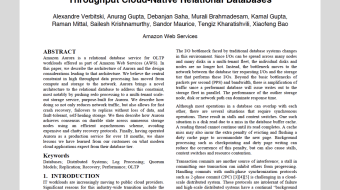Customer-obsessed science


Research areas
-
September 26, 2025To transform scientific domains, foundation models will require physical-constraint satisfaction, uncertainty quantification, and specialized forecasting techniques that overcome data scarcity while maintaining scientific rigor.
-
Featured news
-
IEEE Computational Intelligence Magazine2024In the last decade, conversational artificial intelligence (AI) systems have been widely employed to address people’s real-life needs across various different environments and settings. At the same time, users’ expectations of these systems have been on the rise as they expect more contextual and personalized interactions with continuous learning systems, akin to their expectation in human-human interactions
-
AAAI 20242024Finding node correspondence across networks, namely multi-network alignment, is an essential prerequisite for joint learning on multiple networks. Despite great success in aligning networks in pairs, the literature on multi-network alignment is sparse due to the exponentially growing solution space and lack of high-order discrepancy measures. To fill this gap, we propose a hierarchical multi-marginal optimal
-
2024Large self-supervised models have excelled in various speech processing tasks, but their deployment on resource-limited devices is often impractical due to their substantial memory footprint. Previous studies have demonstrated the effectiveness of self-supervised pre-training for keyword spotting, even with constrained model capacity. In our pursuit of maintaining high performance while minimizing the model
-
ECIR 20242024Negative sample selection has been shown to have a crucial effect on the training procedure of dense retrieval systems. Nevertheless, most existing negative selection methods end by randomly choosing from some pool of samples. This calls for a better sampling solution. We define desired requirements for negative sample selection; the samples chosen should be informative, to advance the learning process,
-
ACM Conference on Intelligent User Interfaces (ACM IUI) 20242024Object detection tasks are central to the development of datasets and algorithms in computer vision and machine learning. Despite its centrality, object detection remains tedious and time-consuming due to the inherent interactions that are often associated with drawing precise annotations. In this paper, we introduce Snapper, an interactive and intelligent annotation tool that intercepts bounding box annotations
Collaborations
View allWhether you're a faculty member or student, there are number of ways you can engage with Amazon.
View all














































